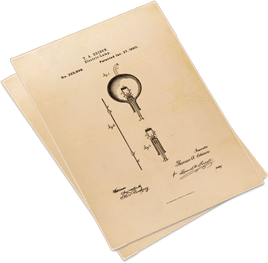We enjoy seeing our patent and trademark clients become successful. When a brand becomes so successful that simply everyone knows it and talks about it, however, a new threat to trademark rights arises: the threat of a trademark becoming the “generic” term for a class of goods and/or services and incapable of being a trademark. This was recently the threat the Google brand that we all know faced and overcame in Elliot v. Google Inc., and the way Google, Inc. prevailed and saved its brand is a lesson in how to handle brand success.
The fight to save Google, the trademark, began in an Arizona courtroom, but the work began long before that.
Unlike terms that are “merely descriptive” of the a feature of goods or services, which can be registered on a subordinate Supplemental Register, words that are the generic name of the class of goods or services cannot be registered at all. That is, no one could expect to register the word “piano” for musical keyboard instruments. Generic terms cannot have or even acquire the right of exclusive use by any one person or company to brand goods in the generic class.
It’s because of this that “cellophane,” the well-known term for transparent plastic sheet material, although a registered trademark in many countries throughout the world for that material, is not a registered trademark in the United States. By the time the British company that coined the brand name got around to applying to register “cellophane” in the U.S., the word had become the generic term we use.
So to avoid becoming generic, brands like Xerox, Kleenex, Thermos, and others, as a consequence of success, have had to work hard to keep their trademark rights valid and enforceable. When a character in a book or play asked for a “kleenex,” small k, the publisher or producer would receive a letter firmly reminding them that Kleenex is a trademark, politely asking for a change or acknowledgement. Anyone who writes and reads writing magazines had probably seen the ads reminding us that “Xerox® has two R’s,” the one in the middle, and the one in the circle at the end. It’s because of this kind of hard (and expensive) policing of these brands that purveyors of well-known products still have valid and enforceable trademark registrations.
Because of that kind of hard and relentless work, when you look up “xerox” in a dictionary, you’ll see the small-x verb ”xerox” for using a xerographic (dry) copy machine, but also the big-X Xerox defined as a trademark for a machine that makes copies.
And that’s what saved Google®. Google, Inc. preserved the literary and literal distinction between small-g google the verb and big-G Google the trademark. Referring, among other things, to the dictionary definition of the verb google, “to use the Google search engine to obtain information about (as a person) on the Internet,” the U.S. District Court for the District of Arizona decided, and the U.S. Court of Appeals for the Ninth Circuit recently affirmed that GOOGLE remains a valid and enforceable trademark of Google, Inc.


